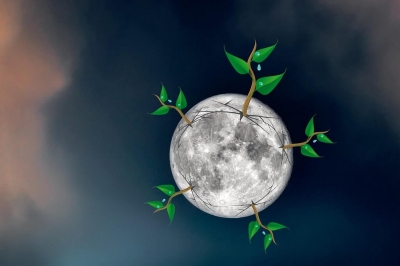
Have you ever looked up at our moon and wondered if it was possible to grow plants there? According to a new study published in Communications Biology, the answer is maybe. Success in growing a plant on the moon, it seems, depends on where exactly the planting is done.
The research, performed by a team of two horticulturists and one geologist from the University of Florida, showed for the first time that plants could be grown in lunar soil. The results are an important step towards humanity’s ambitions of making long-term stays on the moon possible.
Third-time lucky
The research has been in the making for a long time. This was the third time that these scientists had applied to NASA over the last 11 years for samples of soil brought back to the Earth by any or all of the six Apollo landing missions. Having been declined on the first two instances, the researchers got their wish this time around.
Probably because NASA themselves are planning longer excursions to our natural satellite, they parted with 12 grams of soil about 18 months ago. This soil was gathered by the crews of Apollos 11, 12, and 17 and were part of just 382 kg of lunar soil and rocks brought back during the Apollo missions.
The researchers chose the thale cress plant, both because of its hardiness and the fact that its genome has been fully sequenced. The planting was done in plastic plates with wells that are usually used to grow cell cultures. There were four wells apiece for each of the three Apollo missions, and they got a gram of soil each. Four more wells were used as a control, with simulated lunar soil prepared using earthly materials.
To their astonishment, researchers noticed that the seeds sprouted after two days. Regardless of whether they were growing in a lunar sample or in the control, they looked the same for the first six days. Differences began to emerge after that as the plants grown in lunar soil showed stress, developed slowly, and ended up being stunted.
Geological age factor
There were also differences within the lunar samples as the Apollo 11 plans grew most poorly, followed by Apollo 12 and then Apollo 17. The researchers concluded that the reason for this has to do with the age of the soil. While the samples brought back by Apollo 11 are older geologically than those brought back by Apollo 12, the samples from Apollo 17 are most recent in geological time.
The results from this research are very important as it helps us develop food sources for future astronauts who might live and operate in deep space for extended durations. Such plant growth research could also unlock innovations in agriculture that might allow us to grow plants under stressful conditions in places where food is scarce here on Earth.
Picture Credit : Google




